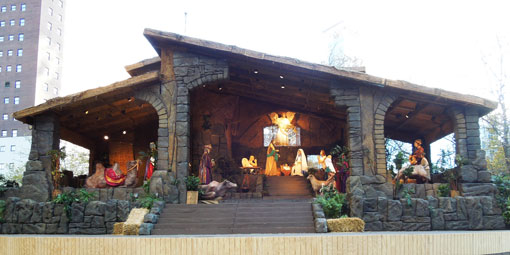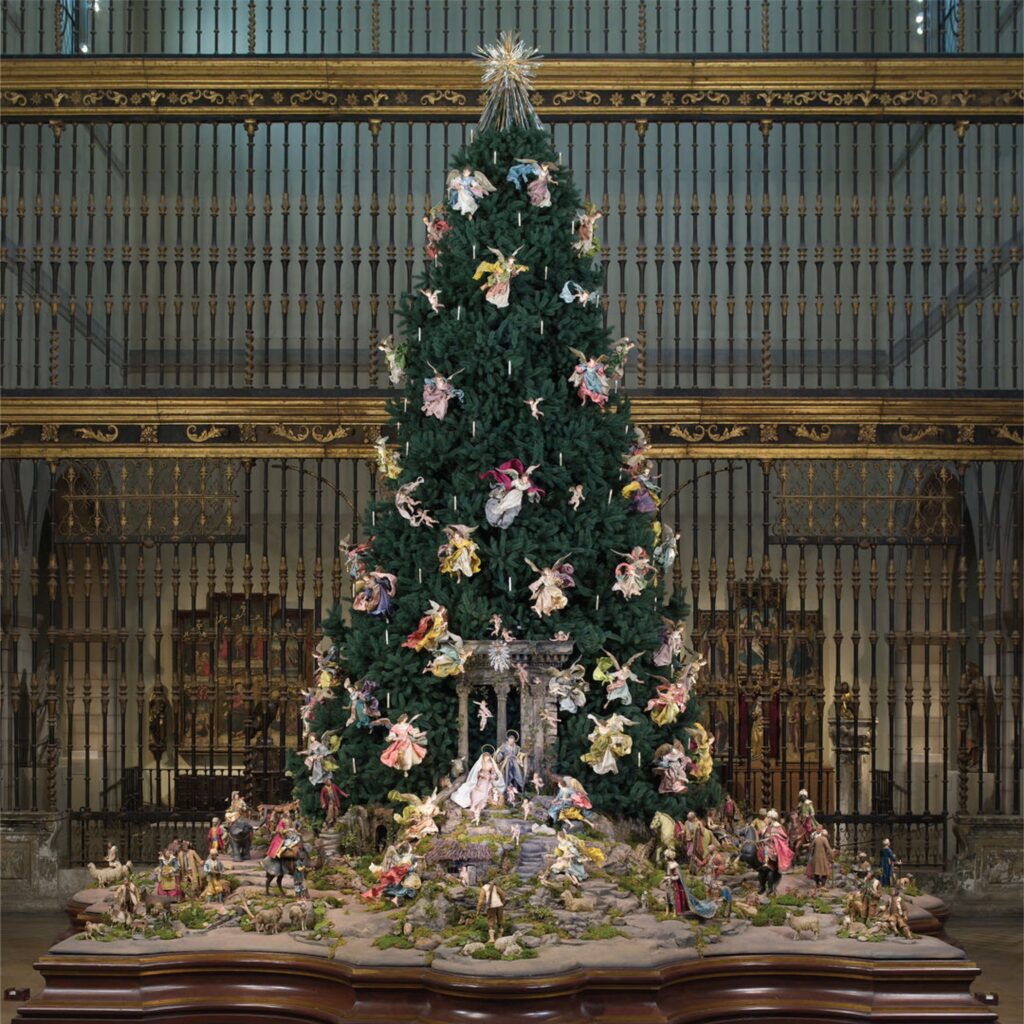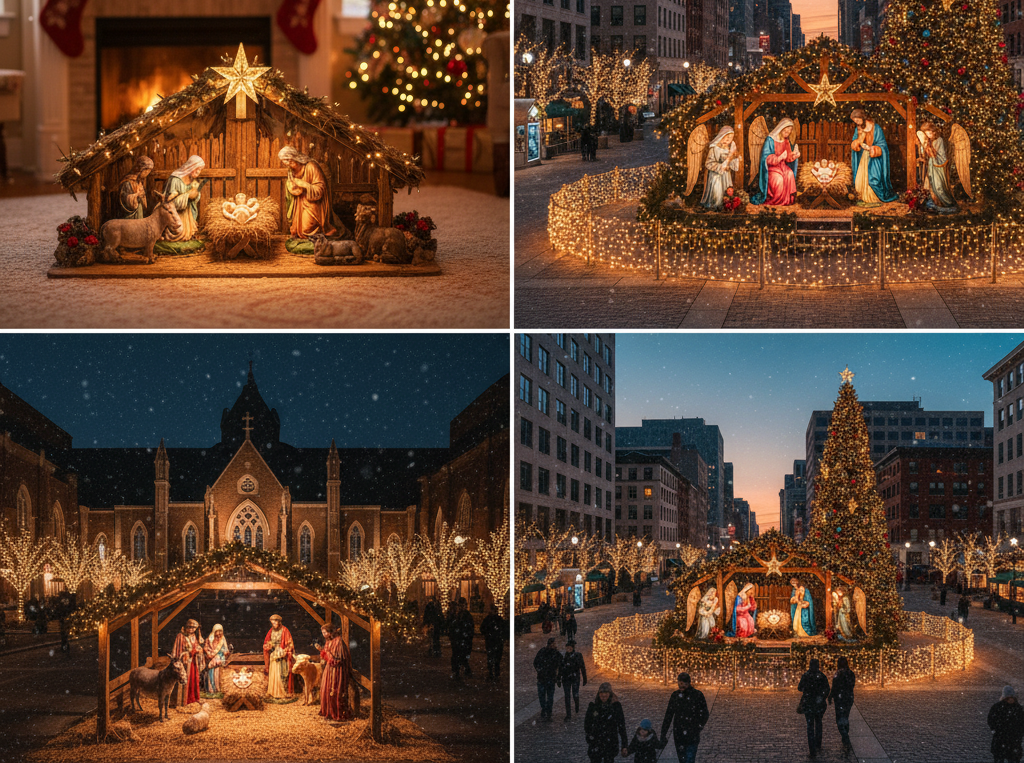Each December, across front yards, church lawns, city squares, and even state capitols, a familiar scene reappears: a humble manger, a newborn baby, and figures of Mary, Joseph, and the visiting shepherds. For many Americans, the Nativity scene is more than just a decoration; it’s a heartfelt reminder of the story that started Christmas itself. Despite cultural shifts, legal debates, and occasional controversy, the Nativity scene continues to hold a firm place in the nation’s seasonal traditions.
From a Small Italian Town to Main Street, USA
The origins of the Nativity scene trace back to 1223, when St. Francis of Assisi organized the first live re-creation of Christ’s birth in the Italian town of Greccio. His goal was simple: to bring the story of Bethlehem to life for everyday people. The idea spread quickly through Europe and, centuries later, made its way to America with European immigrants.
In the U.S., these displays grew in popularity as Christmas itself became a major public holiday during the 19th century. Catholic and Protestant families alike embraced the display as a way to celebrate the birth of Christ, and by the 20th century, Nativity scenes had become a staple of American holiday decor.
A Tradition That Takes Many Forms
What makes the American Nativity scene unique is its diversity.
- In homes, it may be a small tabletop set, sometimes passed down for generations.
- In churches, elaborate displays remind congregations of the spiritual meaning behind the season.
- In public spaces, larger installations, often including live actors and animals, turn city squares into stages for the Christmas story.

Iconic examples include the Pittsburgh Creche, a massive outdoor display that stands downtown each year, and the Metropolitan Museum of Art’s Neapolitan Baroque Creche in New York City, a beloved annual tradition for visitors.

In 2022, a record 43 U.S. state capitols featured Nativity displays, showing that the practice remains both widespread and celebrated.
Popularity That Crosses Generations
According to the Pew Research Center survey, nearly half of Americans (44%) say Christian symbols like Nativity scenes should be allowed on public property, even if they stand alone. That statistic underscores how deeply woven the crèche is into American culture, not only as a religious symbol but also as part of the national holiday landscape.
Even in the age of inflatable Santas and LED light shows, the quiet simplicity of the Nativity continues to resonate. Many find it to be a grounding, peaceful counterbalance to the commercial bustle of the season.
Public Displays and Legal Debates
Of course, not all displays go up without controversy. The Nativity scene has played a recurring role in America’s ongoing discussion about faith and public life.
- In 1984, the U.S. Supreme Court upheld a Nativity scene in Lynch v. Donnelly, ruling that it served a legitimate secular purpose as part of a broader holiday display.
- But in 1989, in the County of Allegheny v. ACLU, the Court struck down a crèche displayed alone inside a courthouse, finding it endorsed religion too directly.
Since then, communities have adopted a balanced approach: Nativity scenes are often displayed alongside secular or multi-faith symbols to comply with the Establishment Clause. These “inclusive displays,” combining a manger with menorahs, holiday trees, or other symbols, have become a hallmark of many city squares.
Controversies and Cultural Debates
Despite its warm image, the Nativity scene occasionally sparks heated discussion.
- Public vs. Private Property: Some residents argue that religious displays don’t belong on taxpayer-funded land, while others see removing them as an attack on free expression. Each year, towns across the U.S. face petitions or lawsuits on both sides of the issue.
- Inclusivity Concerns: Civil rights and secular organizations sometimes protest when Christian symbols appear without representation from other faiths, prompting communities to add Hanukkah or Kwanzaa displays alongside Nativities.
- Vandalism and Theft: Sadly, Nativity scenes are frequent targets of vandalism or theft, a trend so common that some cities have installed GPS trackers inside their figurines to deter pranks.
- Animal Welfare in Living Nativities: Some churches that include live animals face criticism from animal-rights groups like PETA, citing stress or improper conditions during outdoor winter displays.
While these controversies arise every holiday season, they also reveal the enduring relevance of the Nativity scene in public dialogue, proving that, even 800 years after its creation, the manger scene still captures the nation’s attention.
Why It Endures
The Nativity scene endures because it speaks to something timeless. It’s a visual story of humility and hope, a reminder that greatness can come from the simplest of beginnings.
In an era when Christmas is often commercialized, the manger scene offers a return to the heart of the holiday. It invites reflection and community, and in many ways, it bridges faith and culture. Whether displayed in a suburban yard, a church foyer, or a state capitol lawn, it represents the shared desire to pause, celebrate, and remember.
Final Thoughts
From St. Francis’s small stable in 13th-century Italy to the glowing displays on American streets today, the Nativity scene has come a long way, and it’s not going anywhere soon. Its enduring popularity shows that even in an increasingly digital and divided world, simple symbols of peace and faith still bring people together.


